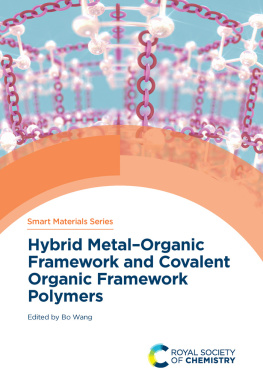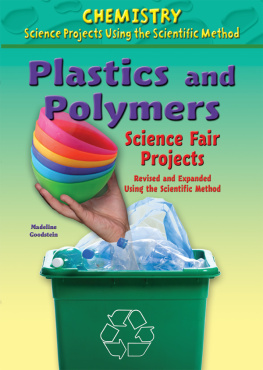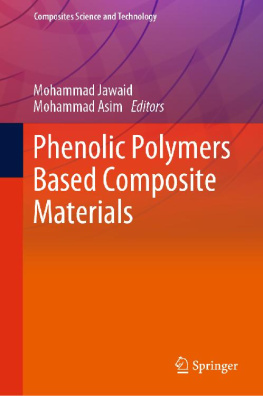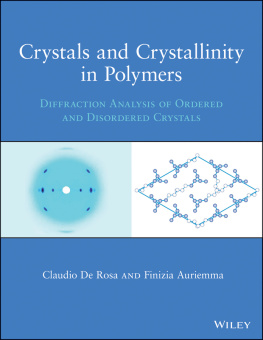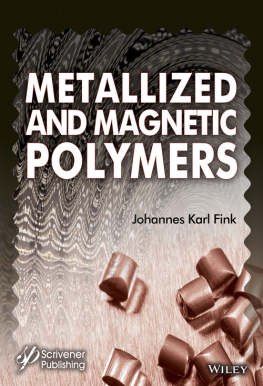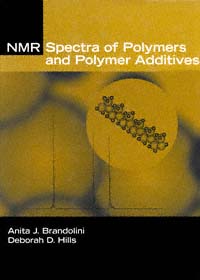| Polymers are all around us. We have grown accustomed to the ubiquity of synthetic materials in our livesin packaging, household products, clothing, and medical products, to name a few. When one also considers the occurrence of natural polymers, such as paper, wood, cotton, and wool, the prevalence of repetitive macromolecular structures becomes even more apparent. The identification and characterization of such large molecules has become an important goal for manufacturers of consumer goods, foods, pharmaceuticals, coatings, adhesives, and other products, as well as for plastics producers. High-resolution nuclear magnetic resonance (NMR) spectroscopy is one of the chemist's most versatile tools for characterizing molecular structure, and its application to polymer solutions has provided unparalleled qualitative and quantitative information about these materials. |
| While the interpretation of NMR spectra of polymer solutions generally follows the same approach as for smaller molecules, the characterization of commercial materials can be a more complicated task. Chemical-shift calculations, spectral editing techniques, and comparison to published data can all be used to assign the observed resonances, but a full explication of the spectrum often requires an understanding of materials formulations as well. Many polymers exhibit inherent structural complexities, such as stereoisomerism and comonomer incorporation, but commercial products are often blends of two or more polymers and may include additives at relatively high concentrations. One of our goals in collecting these spectra has been to provide not just a compilation of chemical-shift data for nearly 300 polymers and polymer additives but also pragmatic advice relevant to acquiring and interpreting NMR spectra of these materials. We hope that the result will be useful to NMR specialists who need information about the spectral characteristics of polymers, and to polymer scientists who may not be familiar with the subtleties of NMR. |
| In selecting the materials to be included in this compilation, we have striven first and foremost for utility. They are, for the most part, the commercially significant polymers with the exception of those that are insoluble, such as thermosetting resins. The data are predominantly 13C spectra, but, where useful, spectra of other nuclei (1H, 19F, 29Si, and 31P) were recorded as well. With the exception of the 19F data, all were acquired on our trusty JEOL GX400/Eclipse 400 spectrometer equipped with a 10-mm broadband probe. Each entry is accompanied by molecular structure(s), peak assignments, experimental parameters, literature references, and comments that include synonyms, trade names, likely blend components and additives, important end uses, and other practical background information. The polymers are grouped according to the chemical structure of the backbone (aliphatic hydrocarbons, unsaturated hydrocarbons, ethers, esters and amides, and miscellaneous) and by the nature of any pendant groups (aliphatic hydrocarbons, aromatic hydrocarbons, esters and amides, and miscellaneous). Each chapter includes an introduction that surveys samples preparation, characteristic spectral features, and typical analyses for the polymers in that group. |
| As with any work of this type, there are many people who contributed to our efforts. In particular, we thank all those friends and colleagues who encouraged (or, in some cases, mercilessly nagged) us over the years we have worked on this project. We extend our particular gratitude to Dr. Michael Frey of JEOL USA (Peabody, MA), who recorded the 19F spectra found in Chapter V. Our coworker, Patricia Nelson, of Mobil Chemical, recorded the photomicrographs shown in Chapter I. Scientific Polymer Products (Ontario, NY) donated many of the polyacrylates and methacrylates characterized in Chapter IV, and Genesee Polymers (Flint, MI) most of the silicone materials in Chapter IX. Samples were received from many of our |
|


